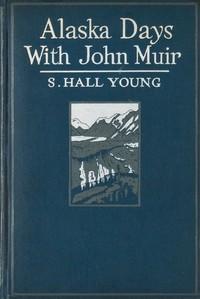Read this ebook for free! No credit card needed, absolutely nothing to pay.
Words: 12630 in 3 pages
This is an ebook sharing website. You can read the uploaded ebooks for free here. No credit cards needed, nothing to pay. If you want to own a digital copy of the ebook, or want to read offline with your favorite ebook-reader, then you can choose to buy and download the ebook.


: Buxton and its Medicinal Waters by Gifford Bennet Robert Ottiwell - Health resorts England Buxton (Derbyshire); Mineral waters England
Situation--Altitude--Geology--Roman Baths--Climate and Temperature--Death Rate--Water-Supply--Rainfall--Drainage--Railway Communication--Public Buildings--Devonshire Hospital and Buxton Bath Charity--Visitors' Accommodation--Antiquarian.
The ancient town of Buxton, which is situated upon the extreme western boundary of the county of Derby, at an elevation of 1,000ft. above the sea level, lies in a deep basin, having a subsoil of limestone and millstone grit, and is environed on every side by some of the most romantic and picturesque scenery in the High Peak, hill rising above hill in wild confusion, some attaining an altitude of from 1,900ft. to 2,000ft.
Buxton, or, as originally called, Bawkestanes, was occupied as a military station by the Romans, who, during their occupancy, constructed baths over the tepid water springs which issue through fissures in the limestone rock, where it comes in contact with the millstone grit, as was proved beyond doubt by the finding of Roman tiles some years ago, when the present baths were under repair.
Although Buxton is situated at so great an altitude, the mean temperature for years past has averaged about 44? Fahr., only a few degrees below that of some of the most frequented winter resorts in Great Britain. Such a temperature, however, may appear to some to militate against Buxton as a health resort except during the summer months, but it must be borne in mind that although the temperature may be said to be somewhat low , yet the atmosphere is especially pure and dry, and, like that of Davos Platz, plays no inconsiderable part in conducing to the highly-sanitary condition of the neighbourhood.
The healthiness of the Buxton district is borne out by the fact that the death-rate from zymotic disease is lower than that of most other localities in Great Britain, and that the average annual death-rate from all forms of disease is only 10 in 1,000.
The air being so pure and dry exerts a most bracing and tonic effect, especially in cases where the system has become debilitated from any cause--anaemia, chlorosis, chronic liver and splenic disease, many forms of bronchial asthma, the first stage of tuberculosis of the lungs, and tubercular degeneration of the mesenteric glands in childhood, I have seen much benefitted by a short residence in the district. To the closely-confined and overworked residents in towns the crispness and buoyancy of the atmosphere impart a feeling of lightness and exhilaration rarely experienced except in a highland district, making mental and physical labour less irksome and life more enjoyable.
The water supply of Buxton is abundant, soft, and free from impurities, doubtless owing to its percolating through the great filter bed of sandstone to the north of the town, and issues in numerous springs far above any source of contamination from the inhabitants in the valley below.
It has been stated that the rainfall of the High Peak, and especially of the Buxton district, is generally in excess of that of most of the other parts of Great Britain. Such an assertion is quite incorrect, as may be ascertained by a careful examination of the rainfall of other localities; although, as in all hilly districts, we must, on account of the attraction of the hills, expect a somewhat larger rainfall than on the plains. The annual average fall in the neighbourhood of Buxton amounts to about forty-nine inches, which is much less than that of many localities both in the Northern and Midland Counties. Even when there is an exceptionally heavy fall of rain the porous nature of the subsoil precludes the possibility of an accumulation of surface water to any great extent.
The following table shows the mean temperature and rainfall for 1890 and 1891, two years in which we have experienced a lower temperature and a greater rainfall than for some years past, which, I believe, has been the experience of most other parts of Britain during the same period:--
Mean Temperature. Rainfall. 1890. 1891. 1890. 1891. Deg. Deg. inch. inch. January 37.6 31.7 6.91 4.58 February 33.1 38.9 .945 .68 March 40.0 36.0 4.995 3.895 April 41.1 38.9 1.635 3.40 May 50.2 45.8 3.21 4.935 June 52.4 53.3 4.685 2.878 July 54.7 56.3 4.78 2.52 August 55.2 55.0 6.05 6.45 September 56.0 54.4 1.405 3.505 October 47.2 46.0 4.20 6.595 November 40.0 38.8 9.455 4.535 December 27.8 37.8 1.3 8.745
Buxton being built in a valley inclining to the east, and upon the slopes of the adjoining hills to the south, west, and north, necessitates the convergence of its system of drainage into a main sewer, which is carried through the heart of the town to its outskirts, where the contents are discharged into tanks, and purified by a chemical process submitted to the town authorities by Dr. Thresh.
The natural incline upon which the town is built greatly facilitated the sewerage arrangements so ably planned and successfully carried out by the late Sir Robert Rawlinson.
Free books android app tbrJar TBR JAR Read Free books online gutenberg
More posts by @FreeBooks









